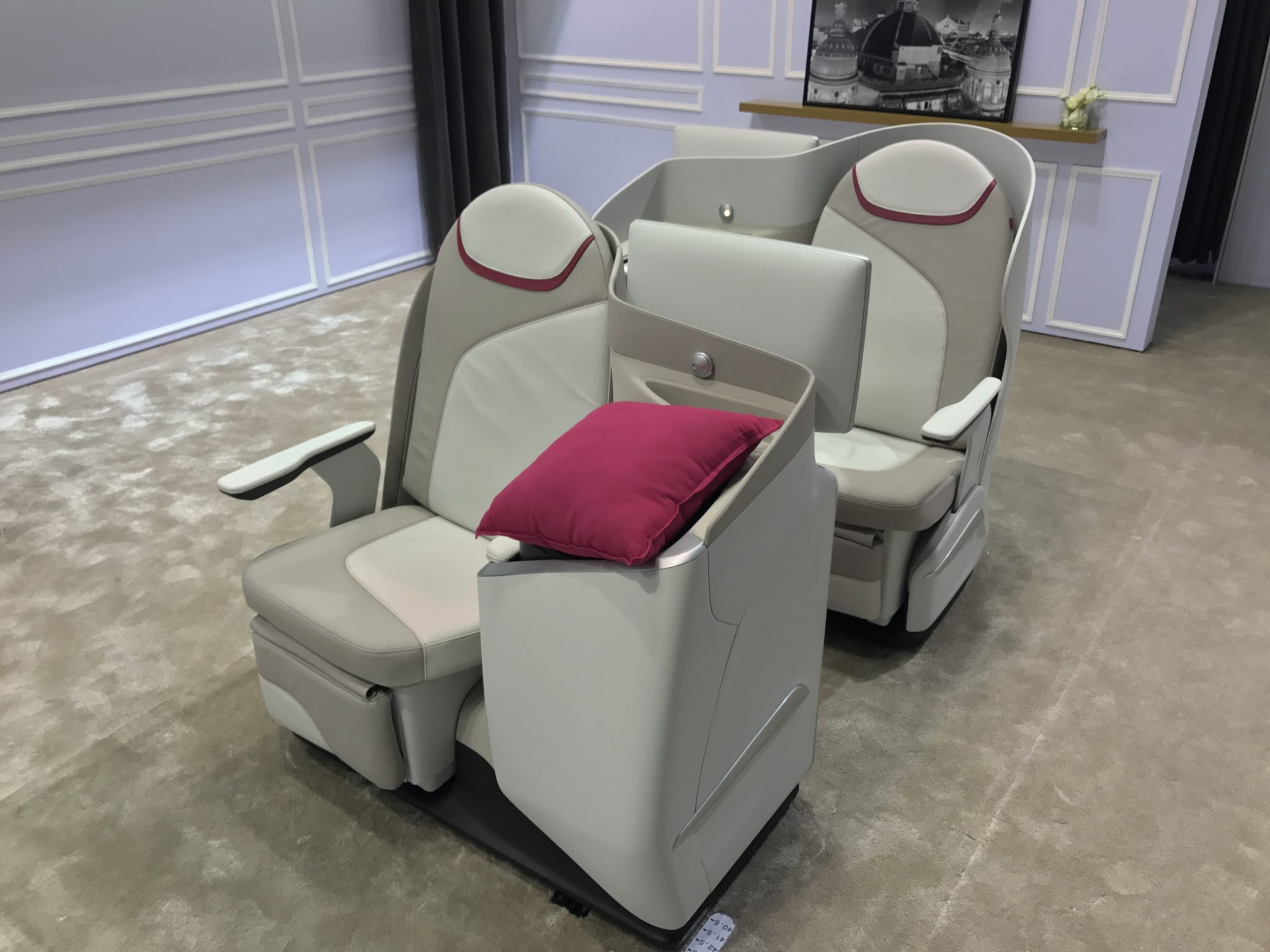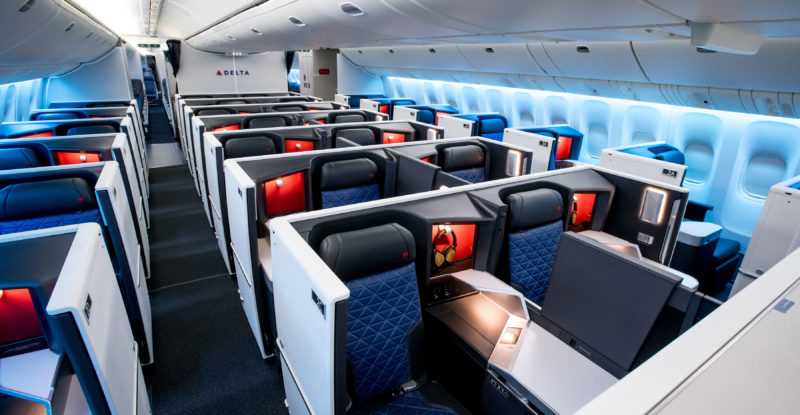 After the Aircraft Interiors Expo this April, I noted that quite a lot of seatmakers seemed to have adopted the Beyoncé model: if you liked it, then you should have put a door on it. But adding doors to existing seats isn’t always the easiest option, with issues around certification, weight, reliability, cabin width and the all important “coffin factor” feeling.
After the Aircraft Interiors Expo this April, I noted that quite a lot of seatmakers seemed to have adopted the Beyoncé model: if you liked it, then you should have put a door on it. But adding doors to existing seats isn’t always the easiest option, with issues around certification, weight, reliability, cabin width and the all important “coffin factor” feeling.
Some folks, though not too many, it turns out, just don’t like the closed doors — and these preferences change according to region, too. Solving this problem is relatively easy: those passengers can simply leave their suite doors open, though the trained reflex of flight attendants to close them may need some time to adjust.
The issues facing airlines and seatmakers, however, are even more complex when taken together, as I’ve found when continuing the discussion in the months between AIX in Hamburg and the co-located APEX and AIX Americas expos in Boston, coming up next month.
Doors need to be certified for emergency egress, even if and when they have come off their tracks, and this generates more challenges of both weight and complexity. Qatar Airways’ Qsuite, for example, has a pull release that allows passengers to yank out the centre panelling to escape if needed. Even in regular service, doors need to be at least as reliable as the seats they enclose. (In fairness to the Qsuite, although there are a number of teething problems with the seat, all the doors I tried worked just fine.)
Weight is a big factor too, of course. Floor to head-height doors are sizeable, and the easy-to-show option — simply adding a sliding door onto the side of an existing staggered or herringbone seating product — adds many unwanted kilograms at a time when airlines are cutting weight wherever they can.
The Beyoncé model of putting a door on it also runs into issues of cabin width on smaller widebodies like the Airbus A330 or Boeing 787 Dreamliner. Seatmakers regularly experience problems around the angle at which herringbone seats can be positioned relative to the centreline. Assuming a set of doors for every seats adds four inches to an existing tight squeeze, that could prove problematic. Even Jamco’s proposed solution of adding seats to only one side of the aisle means a couple of extra inches that many existing products may not be able to accommodate in their existing, certified densities.

Staggered products with direct aisle access currently fit alternating 1-2-1 layouts on the A330 and 787. Image: Virgin Atlantic
On the staggered side of the equation, these smaller widebodies are also at the upper limit of seat width for today’s alternating 1-2-1 staggered seats offering direct aisle access. The eight “columns” of seats on products like Thompson’s Vantage, Stelia’s Solstys, Zodiac’s SKYlounge or Recaro’s CL6710 already maximise space. Is there even room for a set of doors? What tradeoffs need to be made? What can be done to shift window seats into the curvature of the aircraft — but what does that do to the laudable ambition to reduce the number of seat parts per shipset?

How can seatmakers add privacy to their newer compact staggered seats, like Stelia’s Opal? Image: John Walton
One answer, as Singapore Airlines found more than a decade ago when it introduced the first doored suite into the first class arena, may be to have a door that isn’t a door.
SQ’s bespoke first class suite, while framed in metal and thermoplastics, features sections of fabric that can either pull down to provide privacy or be left up to provide a more airy atmosphere.
Another may be to only provide a partial suite, through the use of movable privacy partitions, pull-across screens, or some similar PaxEx wizardry. Some seatmakers are already circulating options like this for comment from their airline customers and their airline customers’ customers, with Zodiac Aerospace showing off a fabric-screened version of the SKYlounge staggered seat at this year’s Aircraft Interiors Expo.
Expect more of this in the future, as airlines push seatmakers to increase privacy and individualisation options, while minimising weight and still offering robust hard product. It’s a fascinating time to be watching this end of the industry, for sure.
Related Articles:
- How many doors do you really need, asks Jamco’s Spread Your Wings
- If you liked it, then you (should) have put a door on it
- Winning the zero-sum game with storage and features, not angles, doors
- The premium cabin trend du jour: privacy doors
- $500 for a door? Delta starts charging for better biz PaxEx
- Qatar QSuite deserves plaudits but raises quality and reliability issues










